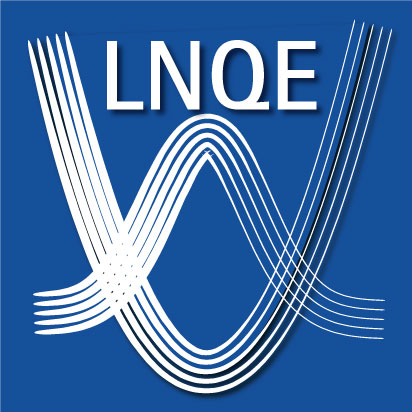Ms. Dr. Julia Wiegand from the Institute of Solid State Physics was awarded the "Wilhelm and Else Heraeus Young Physicists Award" on January 8, 2020 at a ceremony in the former horse stables. This prize for the best doctorate was awarded by the Faculty of Mathematics and Physics for the first time this year.
Ms. Dr. Wiegand conducted experiments in the Laboratory of Nano and Quantum Engineering in the field of spin dynamics of single charge carriers in semiconductor quantum dots. Such individually addressable semiconductor quantum dots are promising building blocks for a future quantum information technology. The quantum dots can serve both as efficient single photon sources and as optically addressable quantum bits, ideally represented by long-lived spin states of single electrons or holes. Dr. Julia Wiegand investigated the spin and charge carrier dynamics of single charge carriers in solid state quantum dots using spin noise spectroscopy as part of her PhD thesis entitled "Nonequilibrium Spin Noise Spectroscopy on Single Quantum Dots". Their worldwide unique optical spin noise measurements on a single, homogeneously broadened quantum dot resonance provide the basis for the simultaneous quantitative investigation of the dynamics of population noise in single quantum dots in addition to the spin dynamics. This step is particularly important because perfect crystals are an unattainable ideal for thermodynamic reasons, so that the race in quantum technology between semiconductor and atomic physics is significantly influenced by crystal defects. Ms. Wiegand was able to show, through a further development of spin noise spectroscopy beyond thermal equilibrium initiated by her, that Auger recombination, which is usually neglected in resonant optical excitation in quantum dots with direct band gaps, has a technologically significant influence on the occupation of the optically driven quantum dot, and that competitive capture of an Auger-generated free hole by acceptors unexpectedly delays the reoccupation of a quantum dot under certain conditions. The exact quantitative dynamics of these two effects has been investigated in close collaboration with theoretical physicists from the Ioffe Institute in St. Petersburg and is of interest not only in the context of basic research. Rather, the new scientific findings reveal an important source of error in quantum dot-based single photon sources and allow a more realistic assessment of solid-state spin quantum bits.









